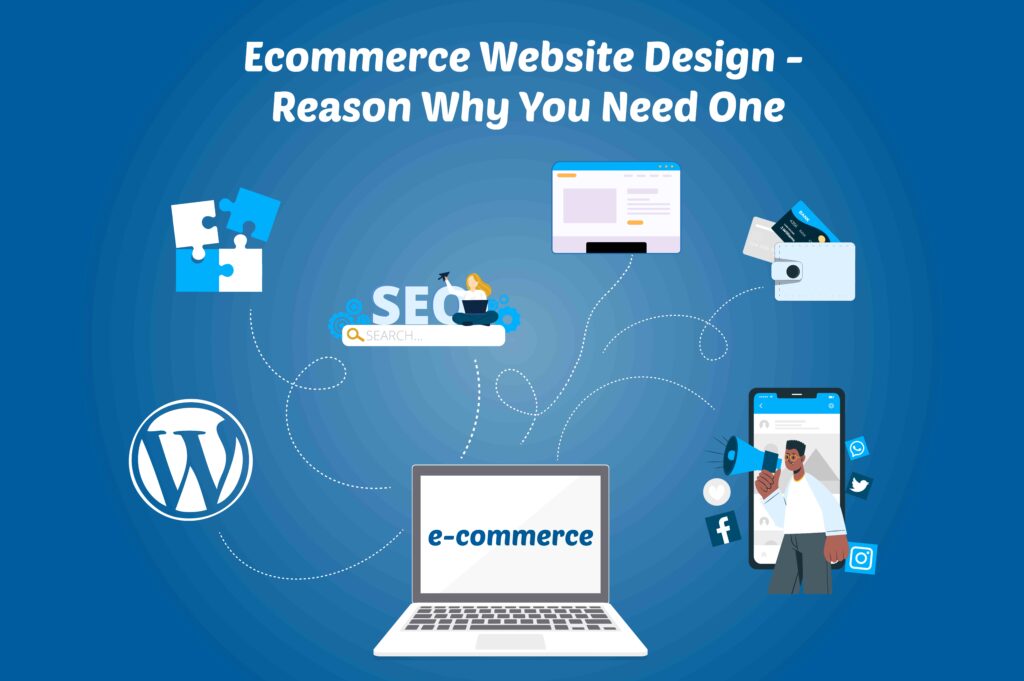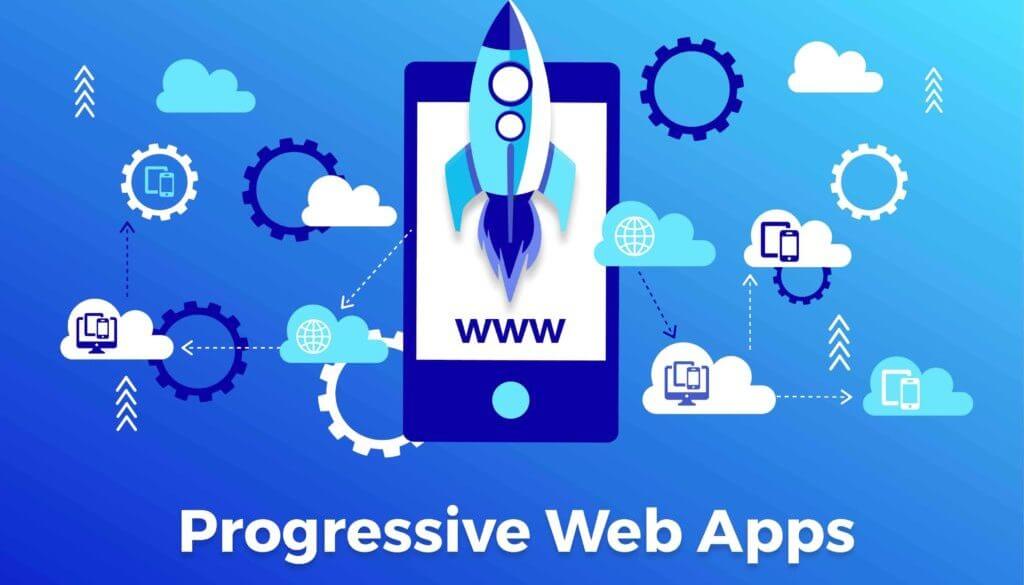Do you have an actual job, but your salary is not enough to sustain your needs, and are looking for a sideline as another way of earning passive income? Or a jobless person, who desires to own a business. Well, I recommend you read this whole content to answer your questions. Maybe these digital business or service ideas can accomplish your goals.
But of course, it is necessary, to begin with building the fundamental knowledge and skills about what type of digital business you want to achieve. First, you need to provide an online presence as the homepage of your digital business before you start.
We provide a list of ideas for different digital businesses for aspiring entrepreneurs.
Webinars or Online Courses
Famous websites that offer online courses like Coursera, Udemy, Ted-Ed, Thinkific, Khan Academy, and many more. They aim to share their knowledge and skills to enhance your expertise. Their strategy is they offer free access, but once you complete the session, you need to purchase their certificates for your credibility. You can also build a digital business by sharing your skills through webinars or online courses.


What are the best platforms for hosting webinars?
Webinars have become a crucial tool for businesses and educators alike. They offer a platform for sharing knowledge, connecting with audiences, and even marketing products or services. But with so many options available, choosing the right platform can be daunting. Here are the top 5 platforms for hosting webinars, each with its unique features:
- Zoom: Zoom is a popular choice due to its reliability and ease of use. It supports large audiences and offers features like screen sharing, recording, and interactive Q&A sessions.
- GoToWebinar: GoToWebinar is designed specifically for webinar hosting. It stands out for its robust analytics, which can be invaluable for marketing and audience engagement purposes.
- Webex by Cisco: Known for its high-quality video and audio, Webex is a top pick for professional settings. It includes features like a virtual whiteboard and breakout sessions.
- Microsoft Teams: Ideal for businesses already using Microsoft’s suite of tools, Teams integrates well with other Microsoft products and offers a secure environment for webinars.
- Adobe Connect: Adobe Connect is a feature-rich platform suited for interactive webinars. It allows for customizable virtual rooms and offers unique engagement tools like polls and quizzes.
Each of these platforms offers distinct advantages depending on your specific needs, such as audience size, integration capabilities, and interactive features. When choosing a platform, consider what’s most important for your webinar’s success – be it the ease of use, technical support, or specific interactive features.
Tutorial Classes
You might be confused about the difference between online courses and tutorial classes. The online course enhances your skills and expertise while tutorial classes provide basic educational backgrounds such as Science, Math, English, and other major subjects to help the students and teachers. Not only educational subjects, but some tutorial classes also present online review centers for bachelor graduates who want to pass civil service, boards, or licensure exams.
This digital business is popular for ESL (English as a Second Language) online classes. It helps non-native English speakers like Chinese, Japanese, Koreans, Vietnamese, Thais, and other Asian countries to learn more about English to improve their reading, writing, speaking, and listening skills.
Best Platforms for Hosting Online Tutorial Classes
In the digital age, online tutorial classes have become a staple in education and skill development. Selecting the right platform to host these classes is essential for effective learning and engagement. Here’s a list of the top platforms that are ideal for hosting online tutorial classes, each offering unique features to enhance the learning experience:
- Udemy: Udemy is a user-friendly platform that’s great for independent educators and trainers. It allows you to create and sell your courses, reaching a wide audience globally.
- Teachable: Teachable is popular among educators for its simplicity and customization options. It provides tools for course creation, marketing, and student management, all in one place.
- Skillshare: Skillshare focuses on creative and interactive learning. It’s perfect for courses related to design, photography, writing, and other creative fields. The platform encourages hands-on projects as part of the learning process.
- Coursera: Partnering with universities and organizations, Coursera offers a wide range of courses including professional certifications and degree programs. It’s ideal for those looking for more formal education online.
- Khan Academy: Khan Academy is a nonprofit organization that provides free educational resources. It’s perfect for educators wanting to offer free tutorials, especially in academic subjects like math, science, and humanities.

Each of these platforms caters to different needs and audiences. When choosing a platform for your online tutorial classes, consider factors like the subject matter, target audience, monetization options, and the type of interaction you want with your students. Whether you’re an individual educator or part of an institution, these platforms offer robust tools to create engaging and effective online classes.
E-commerce
Electronic commerce is perfectly designed for the buying and selling of various local or international products in the digital industry. Examples of this kind of digital business are Amazon, eBay, Shopify, Olx, and others. Some e-commerce businesses feature appliances, clothing, equipment, home decor, etc. This function includes the processing of orders, online payment transactions, and shipment of products.

When selecting the best e-commerce platforms for small businesses, it’s important to consider factors like ease of use, scalability, customization options, and overall cost. Here’s a concise overview of some top e-commerce platforms that are well-suited for small businesses:
- Shopify: Renowned for its ease of use, Shopify is a go-to for many small businesses. It offers a range of customizable templates, integrated payment processing, and a comprehensive set of tools for sales, marketing, and analytics. Shopify is ideal for businesses looking for a quick setup and user-friendly interface.
- WooCommerce: This is a free plugin for WordPress sites, making it a cost-effective choice for businesses already using WordPress. It’s highly customizable and suitable for those who need a more tailored online store. Keep in mind that while the plugin is free, you may need to pay for additional extensions and hosting.
- BigCommerce: BigCommerce is known for its robust functionality and scalability. It’s a great option for small businesses planning to grow rapidly, offering advanced features like multi-channel selling, extensive SEO capabilities, and a wide array of integrations.
- Squarespace: Favored for its aesthetically pleasing design options, Squarespace is ideal for businesses that prioritize branding and design. It offers beautiful templates, easy-to-use drag-and-drop tools, and basic e-commerce functionalities suitable for smaller operations.
- Wix: Wix is another user-friendly platform with drag-and-drop functionality, perfect for businesses that need a simple and intuitive interface. It’s particularly suitable for smaller e-commerce operations that require basic online selling capabilities with a focus on design.
- Magento (Adobe Commerce): While Magento is more complex and may require developer assistance, it offers unparalleled customization and scalability. It’s a powerful platform for businesses with unique requirements or those that anticipate rapid growth and need a highly robust system.
Each platform has its strengths and is best suited for different types of small businesses. Comparing Shopify vs WooCommerce for online stores. Factors like your technical expertise, the level of customization you need, your growth expectations, and your budget will influence which platform is the best fit for your business.
Graphic Designs
It requires familiarity with design tools such as Canva, Photoshop, Adobe Creative Suite, and others tools. If you are creative and have the skills of creating a logo, wordmarks, infographics, brochures, business cards, and other promotional materials. Then you are qualified to be a graphic designer. Some of them can produce animations, presentations, clip art, video graphics, etc.

Best software tools for professional graphic designers.
For professional graphic designers, having the right software tools is essential for creating high-quality work. Here’s a list of some of the best software tools currently available, each offering unique features and capabilities:
- Adobe Photoshop: Widely recognized as the industry standard, Photoshop is essential for photo editing and manipulation. Its comprehensive set of tools allows for detailed image retouching, creating complex digital paintings, and crafting intricate designs.
- Adobe Illustrator: Illustrator is the go-to tool for vector graphics. It’s perfect for logo design, typography, and any design work that needs to be scalable, such as for branding materials or large format prints.
- CorelDRAW: A popular alternative to Adobe’s products, CorelDRAW is favored for its powerful vector graphic design capabilities. It’s suitable for a variety of graphic design tasks, including layout, tracing, illustration, and more.
- Affinity Designer: This is a more affordable but highly capable alternative to Illustrator. It’s particularly appreciated for its speed and smoothness, making it ideal for illustrations, UI/UX design, and branding.
- Adobe InDesign: InDesign is the preferred choice for layout design, especially for print materials like magazines, brochures, and books. It excels in handling complex text and image layouts.
- Sketch: Primarily used for web and UI/UX design, Sketch is known for its simplicity and effectiveness in designing for screens. It’s a Mac-only application and is popular for its collaborative and prototyping features.
- Canva: While not as powerful as Photoshop or Illustrator, Canva is a great tool for quick, template-based design work. It’s user-friendly and ideal for creating social media graphics, simple posters, and other marketing materials.
- Procreate: Specifically designed for the iPad with Apple Pencil support, Procreate is a favorite among digital painters and illustrators. It offers a natural drawing experience with a variety of brushes and tools.
Each of these tools caters to different aspects of graphic design and offers unique functionalities. Professional graphic designers often use a combination of these tools depending on their specific project needs and design specialization.
Copy and Content Writing
The copy and content writing functions create content on a website depending on the business niche. You are promoting the products or services that they offer through publishing the content on their websites.
Using your creative writing skills, you can sell your ideas in making content for the websites that need it. Another way to use your writing skills is by being a content freelancer. The most popular website for it that is used by digital marketers is the Fiverr website which offers freelance copy and content writers.

Copywriting for social media: Do’s and Don’ts
Copywriting for social media is a critical skill in today’s digital marketing landscape. It requires a blend of creativity, strategic planning, and an understanding of the audience. Here are some essential do’s and don’ts to keep in mind:
Do’s
- Understand Your Audience: Know who you’re writing for. Tailor your message to resonate with your audience’s interests, pain points, and language.
- Keep It Concise and Engaging: Social media users have short attention spans. Get straight to the point with engaging and easy-to-digest content.
- Use a Conversational Tone: Social media is about building relationships. Write like you’re speaking to a friend, not a corporation.
- Incorporate Visuals: Use images, videos, or emojis to complement and enhance your text. Visual content tends to perform better on social platforms.
- Include a Call-to-Action (CTA): Encourage your audience to engage. Whether it’s to share, comment, or click a link, make sure your CTA is clear and compelling.
- Test and Optimize: Regularly analyze your posts’ performance. Use these insights to refine your strategy and improve future content.
Don’ts
- Overuse Jargon: Avoid complex language or industry-specific jargon that might confuse your audience.
- Ignore Platform Specifics: Each social media platform has its own language and style. What works on Twitter may not work on Instagram.
- Neglect Proofreading: Typos and grammatical errors can undermine your credibility. Always proofread your content before posting.
- Be Overly Promotional: Constant self-promotion can be off-putting. Focus on adding value, not just selling your product or service.
- Ignore Comments and Messages: Engagement is a two-way street. Failing to respond to your audience can harm your brand’s reputation.
- Forget About Brand Voice: Consistency is key. Your social media posts should align with your overall brand voice and messaging.
By adhering to these do’s and don’ts, your social media copywriting can effectively engage your audience, strengthen your brand identity, and achieve your marketing objectives.
Consultancy
An advisor type of digital business that requires an expert and a solid knowledge of consultancy in a particular area. The role of a consultant is to provide professional feedback for the improvement of an organization or individuals. It involves analyzing the problem, developing solutions, and giving helpful tips or guides to improve their expertise. A consultancy business varies in different types such as marketing consultants, human resource consultants, strategy consultants, technology consultants, software consultants, investment consultants, and so on.
Being an eligible and trustworthy consultant requires attained credibility and numerous skills including leadership skills, commercial awareness, analytic and strategic skills, problem-solving, attention to detail, and excellent communication skills.

How to Start a Consultancy Business in 2023
- Identify Your Niche: Specialization is key in consultancy. Determine your area of expertise—be it marketing, finance, IT, management, education, or another field. Understanding your strengths and the market demand will help you carve out your unique selling proposition.
- Conduct Market Research: Analyze the demand for your consultancy services. Research potential clients, competitors, and industry trends. This will help you refine your business model and positioning.
- Develop a Business Plan: Outline your business objectives, strategies, and financial projections. A solid business plan is crucial for guiding your decisions and attracting potential investors or partners.
- Set Up Your Business Legally: Choose a legal structure for your business (like sole proprietorship, LLC, or corporation). Register your business, obtain any necessary licenses or permits, and consider getting professional indemnity insurance.
- Build Your Brand: Create a strong brand identity that reflects your consultancy’s values and professional expertise. This includes developing a business name, logo, and professional website.
- Establish Online Presence: In today’s digital world, having a strong online presence is crucial. Develop a professional website, create engaging content, and utilize social media platforms to reach your target audience.
- Network and Build Relationships: Attend industry events, join professional associations, and use platforms like LinkedIn to connect with potential clients and industry peers. Networking is key in consultancy for building trust and finding opportunities.
- Set Your Pricing Structure: Determine how you will charge for your services. Will it be hourly, per project, or a retainer fee? Consider your costs, market rates, and the value you provide when setting your rates.
- Invest in Tools and Technology: Use appropriate tools for project management, client communication, and finance management. Efficient use of technology can enhance your productivity and professionalism.
- Deliver Exceptional Service: Once you secure clients, focus on delivering high-quality work. Building a reputation for excellence is crucial for repeat business and referrals.
- Continuously Learn and Adapt: Stay updated with industry trends and continually enhance your skills and knowledge. The consultancy landscape is dynamic, and staying relevant is vital for long-term success.
Starting a consultancy business is both challenging and rewarding. It requires a blend of expertise, strategic planning, and the ability to adapt to changing market conditions. With the right approach, you can build a successful consultancy in 2023 and beyond.
App Development
App development involves computer software engineering where the mobile, tablet, and computer applications are created, programmed, and tested for their performance and capabilities. App developers usually work as a team to generate concepts and ideas for Android, iOS, or Windows customized app innovation.

How to effectively market your mobile app?
- Understand Your Target Audience: Knowing your audience is the first step in effective marketing. Identify their needs, preferences, and behaviors to tailor your marketing strategy.
- Optimize for the App Store (ASO): App Store Optimization (ASO) is crucial for visibility. Use relevant keywords in your app’s title and description, include engaging screenshots, and encourage positive reviews.
- Create a Compelling Landing Page: Develop a dedicated landing page for your app with a clear value proposition, user testimonials, and a direct download link.
- Leverage Social Media: Utilize social media platforms to create buzz around your app. Share engaging content, teasers, and promotional videos that highlight your app’s features.
- Influencer Partnerships: Collaborate with influencers who resonate with your target audience. Influencers can provide credibility and reach to your app.
- Content Marketing: Create valuable content such as blog posts, how-to guides, or videos that relate to your app’s purpose. This can improve SEO and draw organic traffic.
- Email Marketing: Use email marketing to reach potential users directly. Share updates, special offers, and valuable insights to keep subscribers engaged.
- Paid Advertising: Invest in paid advertising through platforms like Google Ads, Facebook Ads, or Instagram to target specific demographics and drive downloads.
- Press Releases and Media Outreach: Get the word out through press releases and by reaching out to tech blogs, app review sites, and industry magazines.
- Run Promotions and Discounts: Limited-time offers or discounts can drive downloads and create urgency.
- Encourage User Reviews and Ratings: Positive reviews and high ratings can boost your app’s credibility and visibility in app stores.
- Analyze and Optimize: Regularly track your app’s performance using analytics tools. Use these insights to refine your marketing strategy and improve user engagement.
- Leverage Referral Marketing: Encourage current users to refer your app to others. Word-of-mouth can be a powerful marketing tool.
- Participate in Award Competitions: Winning or even participating in app competitions can provide valuable exposure and credibility.
- Cross-Promote with Related Apps: Find non-competing apps with a similar target audience and consider cross-promotion strategies.
- Localize Your App: If your app targets global markets, localize the content for different regions to enhance user experience.
Effective app marketing is a continuous process. It involves not just attracting users but also keeping them engaged and loyal to your app. Stay adaptable and always be open to exploring new marketing channels and strategies.
Web Development
This digital business involves the creation of a homepage and designing a layout of a business or personal website. Web developers are responsible for monitoring the website’s technical elements, including the performance and capacity that measures website speed, and mobile accessibility. and traffic. Web development is project focused where team collaboration is involved to satisfy and meet the expectation of their clients.
Being a web developer requires solid knowledge and skill in different programming applications such as HTML, CSS, and JavaScript. Everybody can be a web developer and if you are dedicated to learning about web development, you must learn the basics and practice building a website on WordPress and other sites that offers free website builder.

Differences Between Front-End and Back-End Web Development
Front-End Development:
- Focus: Front-end development, often referred to as client-side development, is focused on what users interact with on the website. It involves everything that users experience directly: the layout, design, interactivity, and behavior of the website.
- Technologies Used: The core technologies used in front-end development are HTML (for structure), CSS (for styling), and JavaScript (for interactivity). Frameworks and libraries like React, Angular, and Vue.js are also commonly used to create dynamic and interactive user interfaces.
- Skills Required: Front-end developers typically need to have a good eye for design, understanding of user experience (UX) principles, and proficiency in responsive web design. They should also be adept at debugging and testing front-end code.
- Responsibilities: Their main responsibility is to ensure that the website is visually appealing, user-friendly, and accessible across various devices and browsers.
Back-End Development:
- Focus: Back-end development, also known as server-side development, is centered around the server, database, and application. It’s responsible for managing and storing data, and ensuring that everything on the client-side actually works.
- Technologies Used: Back-end developers work with server-side languages like Python, Ruby, Java, PHP, and .Net. They also manage databases using systems like MySQL, Oracle, and SQL Server and work with server technologies like Apache, Nginx, and IIS.
- Skills Required: Skills in server-side languages, database management, and API (Application Programming Interface) integration are crucial. Back-end developers must also understand the architecture of web applications and have experience with version control systems like Git.
- Responsibilities: Their primary role is to create, maintain, test, and debug the entire back end. This includes databases, application logic, and server configuration.
Overlap and Collaboration:
- Full-Stack Development: Some developers work as full-stack developers, handling both front-end and back-end development. They have a broad skill set that covers both client and server-side technologies.
- Collaboration: In a development team, front-end and back-end developers must work closely together to ensure that the front-end visual elements are integrated with the server-side logic correctly.
- Shared Responsibilities: Both front-end and back-end developers need to have a basic understanding of each other’s work to communicate effectively and build a seamless web application.
E-books
Electronic books, also called eBooks, are defined as visual text presented with a formatted position enabling you to read on electronic devices such as computers, smartphones, netbooks, tablets, and other gadgets. It is also known as a printed book version.
You can also listen to audiobooks instead of reading them on a device. This applies to the person with a problem with their eyesight.
This type of digital business is publishing an electronic book on Amazon, Kindle, and other eBook-selling sites. You must reach every word count and format requirement before publishing fictional or nonfictional eBooks.
Blogging
Blogging is written material that contains various topics, articles, opinions, views, and insights in current news or events, travel experiences, culture, foods, politics, mental health, etc. You can also make informational tips or how-to guides for your readers.
Famous blogging platforms such as WordPress, Wix, Weebly, Tumblr, and others offers free online and stand-alone websites. Most bloggers monetize their blogs by placing advertisements on their websites. Every reader who will click the ads from the sites will generate money or also known as CPM (cost per mile).
Vlogging
Clarification for those who are confused about the difference between blogging and vlogging, blogging involves writing content, on the other hand, vlogging involves making video content. The number of YouTube vloggers is arising around the world. Famous vloggers like PewDiePie, Logan Paul, Jeffree Star, Dude Perfect, etc. are earning millions from YouTube ads. No wonder why many people want to become aspiring vloggers as their sideline of passive income.
Vlogging is often associated with building a channel, video editing, adjusting audio, making thumbnail photos, writing descriptions on the video, etc. You can be an aspiring vlogger too if you have confidence in facing the camera and know how to edit videos.
Podcasting
The similarity between blogging, vlogging, and podcasting, they contain informative content, while it’s the difference is it involves recording audio. A famous music streaming site named Spotify also presents various inspirational and informative podcasts for educating its listeners.
It is a significant advantage for the people who emcee or host an event, guest speakers, DJs, etc. They can make a podcast using their vocal talents. You can earn money from Spotify with the number of streams on your podcast.
Advertising
Digital marketing business tools like Google Ads, PPC (Pay Per Clicks), search engine and social media optimization, and other strategy are considered important advertising tools for small and large digital businesses.
If you are familiar with these digital marketing strategies, you can build your website featuring different types of advertising to help grow small to large businesses.
Technical Writer
Many amateur bloggers and copy and content writers need to improve their work, especially to satisfy their clients. This type of digital business requires a solid background as a technical writer. If you know a lot of technical writing rules such as proper usage of punctuation marks, redundancy of words, text flow, grammar structures, and so on, then you know how to proofread.
Another form of a technical writer is they publish an informative, direct, or instructional manual to educate readers on how things work. It is written with complex and technical words. The best example of technical written materials is user manuals like smartphones or appliances, legal disclaimers, company documents, annual reports, software installation guides, etc.
Social Media Manager
The role of social media managers is to handle and manage Facebook, Twitter, Instagram, and other social media platforms to represent a company or brand. It includes creating a post, compiling campaigns, responding to comments, replying to messages, and other promotional activities through social media.